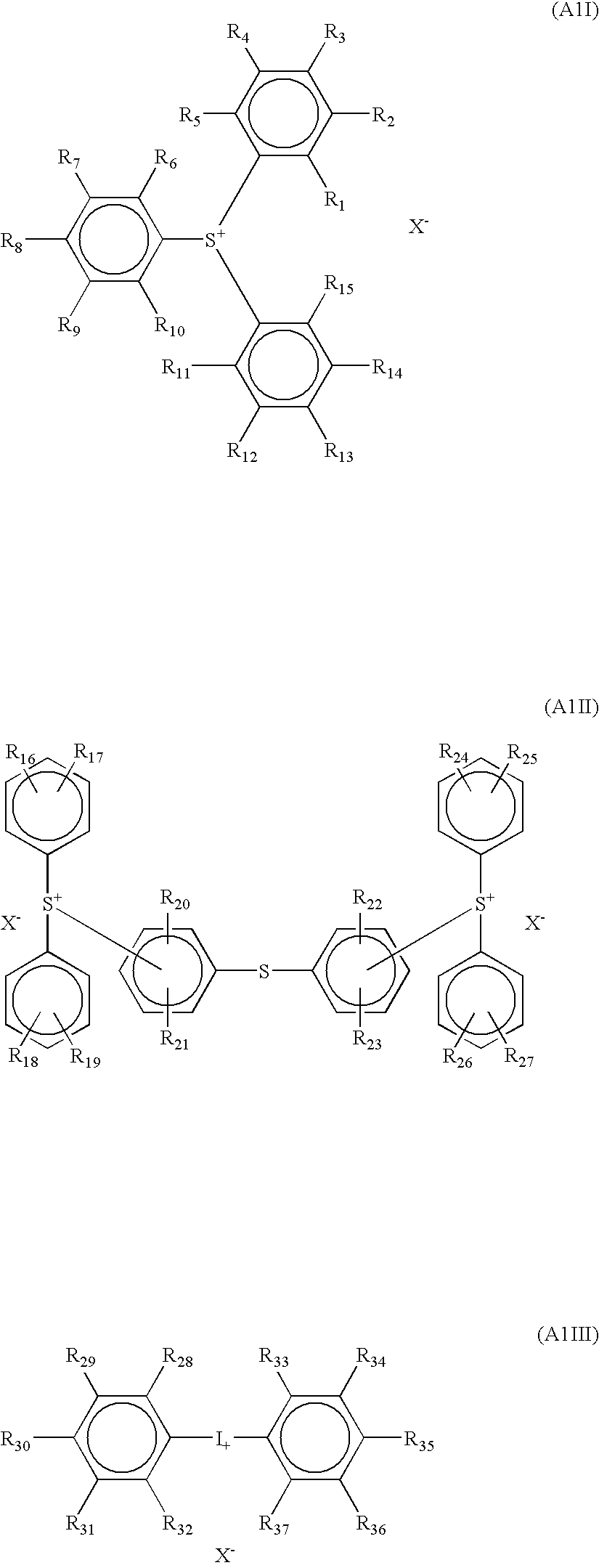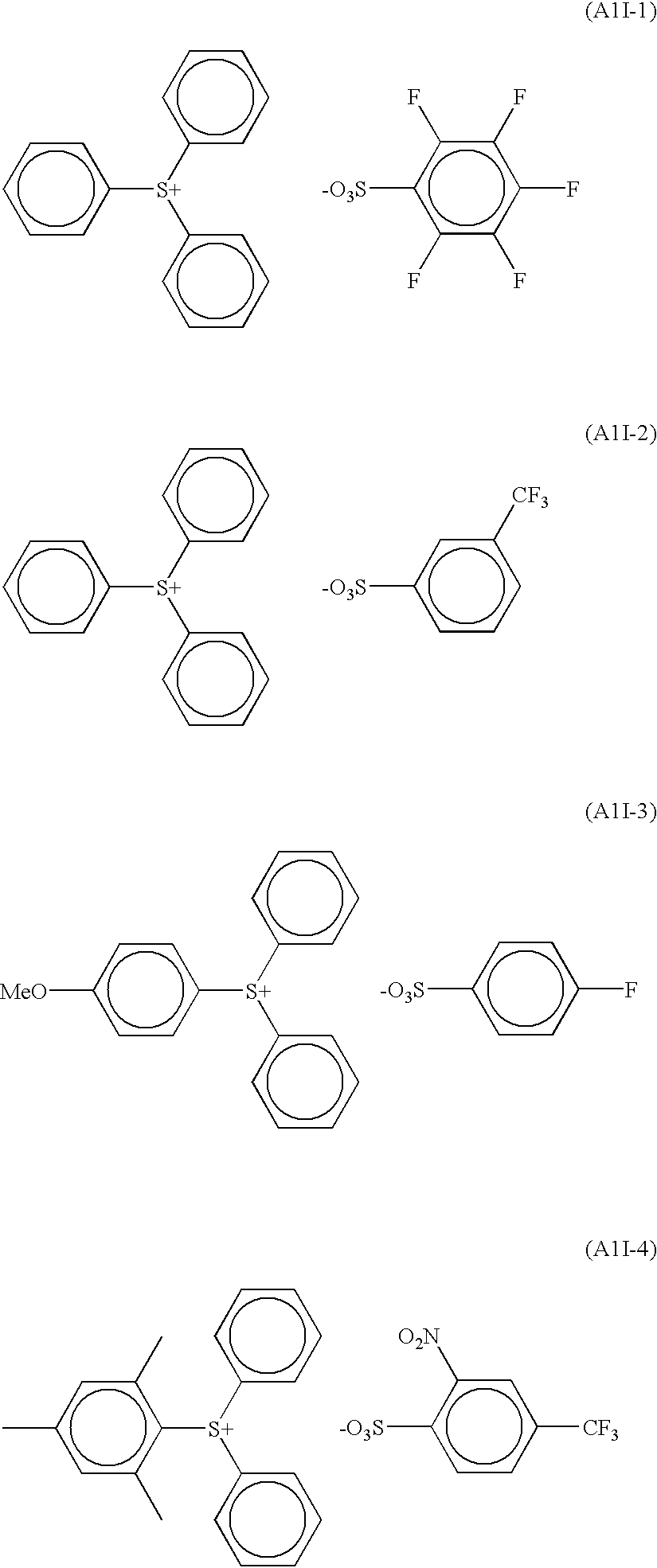Positive photosensitive composition
a composition and photosensitive technology, applied in the field of positive photosensitive compositions, can solve the problems of arf resist development defect and ped stability, insufficient chemical amplification resist compositions, low resistance to dry etching, etc., and achieve excellent ped stability
- Summary
- Abstract
- Description
- Claims
- Application Information
AI Technical Summary
Benefits of technology
Problems solved by technology
Method used
Image
Examples
synthesis example 2
Synthesis of Resin (18) (Main Chain Type)
[0357] Into a separable flask were put tert-butyl ester of norbornenecarboxylic acid, butyrolactone ester of norbornenecarboxylic acid and maleic anhydride in a molar ratio of 40 / 10 / 50 and tetrahydrofuran in an amount necessary for forming a solution having a reaction concentration of 60% by weight, and the solution was heated at 60.degree. C. under a nitrogen gas stream. After the reaction temperature was stabilized, 2% by mole of a radical initiator (V-601 manufactured by Wako Pure Chemical Industries, Ltd.) was added to initiate a reaction. After heating for 12 hours, the resulting reaction mixture was diluted twice with tetrahydrofuran and poured into a solvent mixture of hexane and isopropyl alcohol (1 / 1 by weight) to deposit white powder. The powder was collected by filtration and dried to obtain Resin (18).
[0358] Resin (18) was subjected to molecular weight analysis by a GPC method and it was found that a weight average molecular weigh...
synthesis example 3
Synthesis of Resin (30) (Hybrid Type)
[0360] Into a reaction vessel were put norbornene, maleic anhydride, tert-butyl acrylate and 2-methylcyclohexyl-2-propyl acrylate in a molar ratio of 35 / 35 / 20 / 10 and dissolved in tetrahydrofuran to form a solution having a solid content of 60% by weight, and the solution was heated at 65.degree. C. under a nitrogen gas stream. After the reaction temperature was stabilized, 1% by mole of a radical initiator (V-601 manufactured by Wako Pure Chemical Industries, Ltd.) was added to initiate a reaction. After heating for 8 hours, the reaction mixture was diluted twice with tetrahydrofuran and poured into hexane of five times in volume to deposit white powder. The powder was collected by filtration and dissolved in methyl ethyl ketone and the solution was poured into a mixed solvent of hexane and tert-butyl methyl ether (1 / 1 by weight) of five times in volume to reprecipitate. The white powder deposited was collected by filtration and dried to obtain R...
PUM
| Property | Measurement | Unit |
|---|---|---|
| wavelength region | aaaaa | aaaaa |
| roughness | aaaaa | aaaaa |
| temperature | aaaaa | aaaaa |
Abstract
Description
Claims
Application Information
 Login to View More
Login to View More - R&D
- Intellectual Property
- Life Sciences
- Materials
- Tech Scout
- Unparalleled Data Quality
- Higher Quality Content
- 60% Fewer Hallucinations
Browse by: Latest US Patents, China's latest patents, Technical Efficacy Thesaurus, Application Domain, Technology Topic, Popular Technical Reports.
© 2025 PatSnap. All rights reserved.Legal|Privacy policy|Modern Slavery Act Transparency Statement|Sitemap|About US| Contact US: help@patsnap.com



